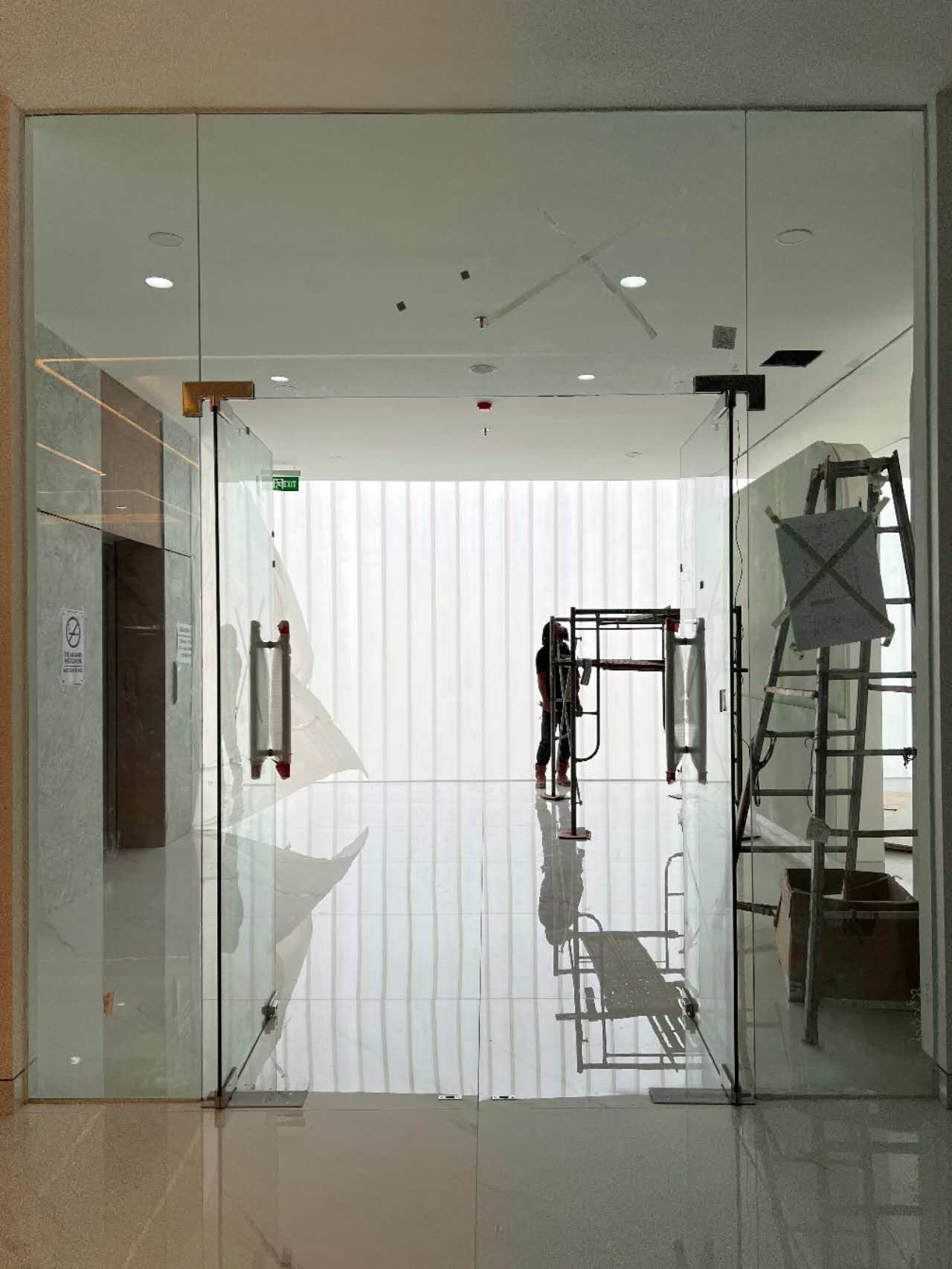The core of the “light-transmitting yet non-transparent” property of U profile glass lies in the combined effect of its own structure and optical characteristics, rather than being determined by a single factor.
Core Determinants
Cross-sectional structure design: The “U”-shaped cavity of U profile glass causes light to undergo multiple refractions and reflections after entering. Light can penetrate, but its propagation path is disrupted, making it impossible to form clear images.
Surface treatment process: Most applications involve sandblasting, embossing, or matte treatment on the glass surface. This disrupts the regular transmission of light, further weakening the see-through effect while retaining diffused light transmission.
Glass thickness and material: The commonly used thickness of 6-12mm, combined with ultra-clear or ordinary float glass materials, not only ensures light transmittance but also inhibits perspective through slight scattering of the material itself.
Wide-ranging Applications of the “Light-transmitting yet Non-transparent” Property in Architectural Design
Building exterior walls: U profile glass can be used for building exterior walls, such as the Chile Pavilion at the Shanghai World Expo, to form light-transmitting curtain walls. During the day, U profile glass provides soft light through diffuse reflection, ensuring adequate natural lighting indoors while protecting indoor privacy. At night, combined with lighting design, it can create a transparent light and shadow effect, enhancing the building’s nighttime visual appeal.
Interior partitions: Seoul National University Library in South Korea uses wire-reinforced U profile glass as the staircase partition wall. It balances fire resistance and light transmission, achieving a 3.6-meter column-free transparent partition. It not only guarantees spatial openness and lighting effects but also provides a certain degree of independence and privacy protection for different areas.
Lighting canopies: U profile glass is suitable for transparent roofs of greenhouses, platforms, swimming pools, verandas, etc. For example, some greenhouses use U profile glass as the canopy material. It allows plenty of light to enter, meeting the light needs of plant photosynthesis while avoiding clear observation of the interior from the outside.
Door and window design: U profile glass can replace lighting windows, skylights, etc., that do not require full transparency. For instance, in the skylight design of some office buildings and shopping malls, it can increase natural lighting, reduce energy consumption from artificial lighting, and maintain indoor privacy.
Balcony guardrails: Using U profile glass for balcony guardrails allows residents to enjoy a good view and ample sunlight. It prevents direct see-through of the balcony interior from the outside, protecting residents’ privacy, and its unique shape also adds aesthetic value to the building’s appearance.
Featured space creation: U profile glass is often used to create building entrance spaces or featured spaces near street corners. For example, the Beijing “1959 Time” Cultural and Creative Industry Park combines U profile glass with metal, masonry, and other materials to create a unique visual experience. Its light-transmitting yet non-transparent property also adds a sense of mystery and hazy beauty to the entrance space.

Post time: Nov-07-2025
